Compression socks are specially designed socks that come in a variety of styles including hose, sleeves, knee-high, thigh-high, and many more.
Here is our top pick for 20-30 mmhg compression stockings:
Where do you buy compression socks?
This type of socks is different from the regular socks that you are used to wearing because they are tighter, and better built to apply pressure onto the body part you wear them on. Compression socks apply pressure onto the body in order to improve blood flow within the veins.

The veins are responsible for transporting blood back to the heart after the arteries have taken it around the body. Unlike arteries, veins do not have muscle lining to help with the pumping process. Instead, they rely on the movement of muscles to pump blood back to the heart. Often, the veins in the legs will not succeed at this as they are working against gravity making it harder to pump blood to the heart.
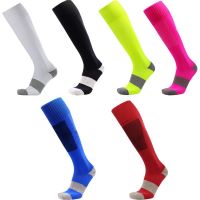

When the muscles deteriorate, veins struggle to pump blood to the heart. This results in the pooling of the blood in the legs, ankles, and feet. When this happens, the legs feel tired, achy, and heavy. You will also develop swelling, pain, and tightness of the skin. This is a condition known as Edema. Other diseases such as varicose veins and deep vein thrombosis can also affect the veins in the legs. The symptoms of all these diseases are managed by compression socks; specifically 20-30 mmHg socks.
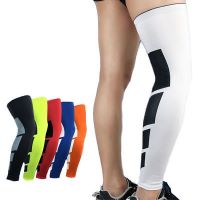

Compression socks come in different pressure levels. The least is 8-15 mmHg pressure level while the highest is 30-40 mmHg pressure level. To treat symptoms of edema, varicose veins, and deep vein thrombosis, you will need 20-30 mmHg compression socks. The level of compression indicated in the socks means that it does not go lower than 20 mmHg in pressure but does not go higher than 30 mmHg in pressure.

This level of pressure is considered Class I or firm compression. It is used to treat and prevent a variety of mild to moderate symptoms brought about by edema, deep vein thrombosis, varicose veins, and even post-sclerotherapy. 20-30 mmHg compression socks are popularly prescribed to people who are on their feet all day, people who fly a lot, and athletes who train on their feet most of the time.

They help manage these symptoms by applying firm pressure on the veins which reduces their diameter. When the diameter is reduced in size, it increases the pressure of blood flow. If you wear them early enough, it will prevent the onset of varicose veins and spider veins.

If you have already developed varicose veins, then you will notice less swelling, less bulging of veins, and less pain. Patients with edema notice a drastic change with less swelling, better circulation, and no pain. Moreover, patients with deep vein thrombosis are at less risk of developing a Pulmonary Embolism after wearing compression socks.

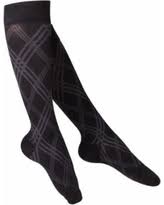
The best thing about these compression socks is that they come in a variety of styles. First, they are colorful and bright, while others come in nudes, and blacks making them perfect for the office. These compression socks also come in knee-high, full-length hose, low cuts, toeless, and sleeves. There are also some options that come with fastenings to help with putting on. They are often zippers and velcro.
Popular Articles on ComproGear
Penis Straws Where To Buy Penis Straws
Car Air Purifier Hepa Car Air Purifier
Compression Socks and Teachers
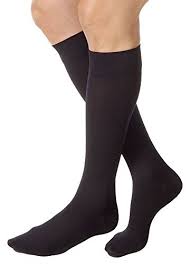
Many people associate compression wear with nurses, people with diabetes, and the elderly and they are not wrong. Nurses (and others in the medical field) spend a lot of time on their feet and so they are more likely to develop edema and varicose veins. The elderly face muscle deterioration which affects the ability of the veins to transport blood back to the heart. People with diabetes also have slowed blood flow which puts them at risk of developing deep vein thrombosis.


While the biggest market for 20-30 mmHg compression socks is the three mentioned above, there is a big population than should be wearing compression socks even without symptoms. This population is teachers.
Teaching is a respected profession that gives satisfaction to its participants because it educates the masses. However, it comes at a price, and that price is proper leg health. Although it may not always sound risky, teaching is one of the professions that put you at risk of developing varicose veins and spider veins.
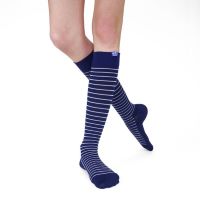
This is because the daily lives of teachers require them to stand for a long period of time while teaching. Despite what most people think, teaching requires a lot of physical stamina. They work long hours teaching that goes beyond the time parameters of the school day. When they are not conducting lessons on their feet, they spend even longer hours sitting down and grading papers.
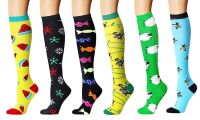
Why is this bad?
When you stand for long periods of time, the veins in your legs work twice as hard to achieve an upward flow of blood. This is not the most optimal condition for proper circulation and so blood will pool at the feet. The veins will become stressed which will lead to bulging, throbbing, swelling, and pain in the legs. This condition is what is known as varicose veins.
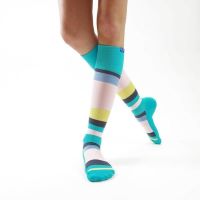
Sitting down does not do anything better for your veins. This is because when you sit down, your leg muscles relax which is bad for the veins that rely on the activity of these muscles to pump blood. When your muscles relax, the blood flow slows down which leads to pooling, pain, and swelling. Unfortunately, many teachers face these conditions and develop these symptoms without knowing it. This is because they are often too busy to pay attention to their leg health.
One of the easiest and most efficient solutions for teachers who face these problems is compression socks. The 20-30 mmHg compression socks offer just the right amount of pressure to help manage these symptoms. Now it is important to note that the compression socks will not cure these diseases, but they are beneficial to teachers.


Benefits of 20-30 mmHg Compression socks to teachers
The most obvious benefit of wearing compression socks as a teacher is reduced swelling, and pain. Compression socks compress the limb, decreasing the diameter of the veins, which in turn speeds up blood flow. Better blood flow oxygenates the tissues, leading to quicker muscle recovery. Therefore, after a day of standing all day, your muscles will recover well.
Compression socks also reduce oxygen consumption which increases resistance as the days go by. With these socks, the toxins that accumulate in the muscles after exertion are drained quicker. With reduced muscle pain, you can expect little to no soreness, and no fatigue.

Compression socks reduce the risk of hematoma formation. Hematoma is primarily described as a collection of blood outside of blood vessels. Normally, they are caused by an injury to the wall of a blood vessel, which prompts blood to seep out of the blood vessel into the surrounding tissues. One of the most common causes of hematoma is injury or trauma to blood vessels such as the veins.
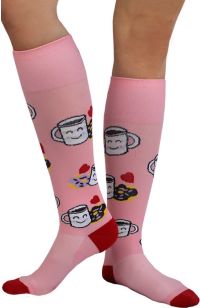
Compression socks can also be padded or reinforced in order to offer healing qualities to certain parts of the body. The footless and open-toe options allow people to inspect for injuries.
Advantages of Compression Socks
Compression therapy has been used by many people over time to help manage symptoms and with good reason. It is a form of treatment that is non-invasive. When it comes to treating varicose veins, there are options such as surgery that could put you in bed for weeks in recovery time. However, compression socks do not open up the tissues in any way. You can wear them and immediately go about your daily activities easily.
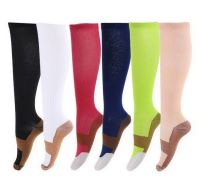
Compression socks are also convenient in more than one way. First is affordability; compared to options such as surgery, compression socks are quite affordable. You can get a pair over the counter or online in any pressure level. With a proper measurement of your legs, you get to reduce your symptoms without using up your savings.
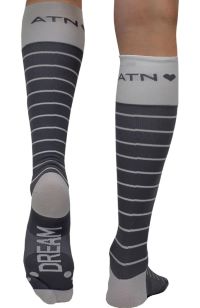
They are also convenient in that you can wear them under your regular clothes and go about your day without feeling restricted or forced to stay in one position. During the first few days, you will notice a little discomfort because they are tighter than the socks you are used to wearing. However, after a while, your socks should start to feel like a part of you. Still firm, but comfortable to move around in.
Compression socks are also a stylish treatment method. Though it may seem insignificant, compression socks have evolved into stylish designs and patterns. Some embrace holiday themes, others pop culture, and others are made to embrace a professional outlook. What is more, compression socks may come with fastenings such as zippers, and velcro that makes it easy to wear. Knee-high socks are especially popular for having colorful patterns, themes, and designs.

What to do before you start wearing compression socks
If you have made a choice to consider wearing compression socks, then there are a few things you should do before you actually start wearing them. The first is to consult a doctor. As it has been mentioned before, compression socks are much firmer than regular socks.
What is more, they come in different compression levels that could either benefit or harm your veins. To be sure, consult a doctor or a vein specialist who will guide you into the right pair and pressure level of compression socks. What is more, the doctor will give you guidelines on how to wear them, and when to wear them for optimum therapy.
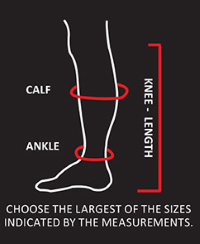
After you have consulted your doctor and received a recommendation, then you need to pick out a pair of compression socks. The color or pattern of the socks is dependent on what you need and what you like. When you are picking out a pair of 20-30 mmHg compression socks, you need to measure your legs to ensure that you get the right size. Here is our guide to choosing extra wide versions.
The right size of compression socks for men and women should feel firm but not tight. They should be firm enough not to slip from the knees. Knee-high compression socks have an elastic band at the top to prevent slipping. If your compression socks are slipping, they are too big for you. Folding over is also a sign that they re too big.

If your compression socks feel unusually tight even after a few days of wearing them, then they are too small. The right pair of compression socks should feel tight for the first few days. However, after that, they should feel firm and comfortable to move around in.
Picking the right compression socks is also about choosing the fabric that works for you. You may be allergic to certain fabrics. Luckily, compression socks today are made from different fabrics today and at least one is bound to work for you. The best thing to do is to find two types of fabrics that work for you. The fabrics should be comfortable, absorbent, and breathable.

The next thing to do after buying your compression socks is to learn how to put them on properly. Unlike regular socks, you cannot wear them as you usually do. Putting on compression socks is a matter of prepping the right way. Ensure that you put them on early in the morning because this is when the legs are least swollen. Ensure that your legs are dry but moisturized.
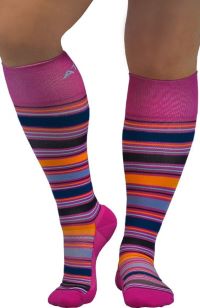
During the summer, sweat is a hindrance to wearing compression socks. Sprinkling a layer of talcum powder, or corn flour will absorb the excess moisture and make wearing the socks much easier. During the winter, your legs may be dryer than usual. If you have dry skin, you will also struggle with wearing compression socks. You can aid this by applying a thin layer of moisturizing cream or lotion. Ensure that you properly rub in the lotion to make wearing easier.
Finally, learn how to care for your compression socks. A great part of compression socks is taking care of them so that they last longer. Watch out for care labels that will guide you on washing and drying them. It is best to have a few pairs to switch out when you wash and dry. When washing, always use cold water to protect the elastic. Instead of wringing, dab them with a towel to get rid of excess moisture.
This page last updated August 5, 2022
